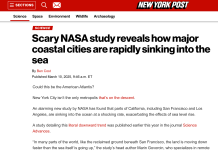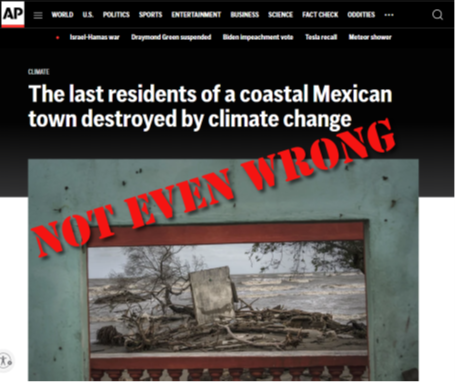By Linnea Lueken and Anthony Watts
ABC News recently posted a story from The Associated Press (AP) by author Daniel Shailer claiming that climate change is destroying the Mexican seaside village of El Bosque. This is false. The town was built on a naturally unstable location that is uniquely susceptible to normal wave action and storms, sea level rise is occurring at a normal rate for the region.
The article, “The last residents of a coastal Mexican town destroyed by climate change,” claims that flooding driven by “some of the world’s fastest sea-level rise and by increasingly brutal winter storms has all but destroyed El Bosque, leaving piles of concrete and twisted metal rods where houses used to line the sand.”
While the image painted by the AP writer is dramatic, sea level rise at the actual location is actually not all that unusual. The most severe sea level rise in the Gulf of Mexico is occurring in areas that suffer from large amounts of aquifer withdrawals, land subsidence, as discussed by Climate Realism here, here, and here.
In fact, Climate Realism has examined El Bosque itself in detail in a previous article, “Wrong, Amnesty International, “Climate Change in Mexico” is Not Displacing People,” where we examined sea level rise data from the U.S. National Oceanic and Atmospheric Administration (NOAA) Tides and Currents database. We found that the rate of sea level rise near El Bosque does not appear to be unusually rapid compared to other regional stations. (See figure 1 below)
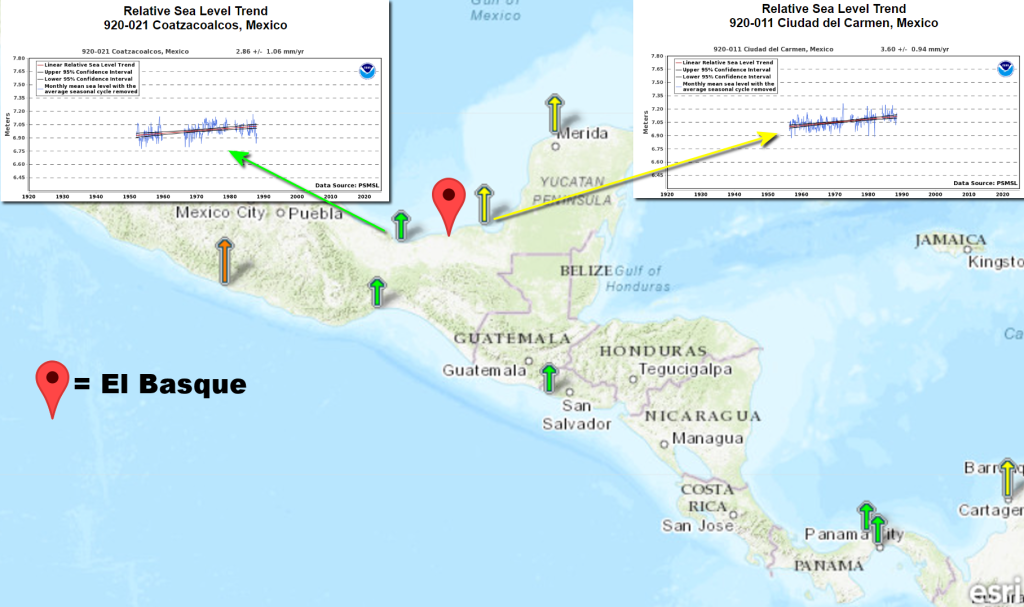
The Climate Realism article also points out that El Bosque is built in possibly the worst location possible, a peninsular sand bar. El Bosque, like other peninsular sandbars was created in the first place by continuous changing land erosion and deposition over time, driven by waves. Watts writes that the “particular section of beach is steeply sloping into the sea, and it is well known that a steeply sloping shore will cause waves to break closer to shore, causing more erosion than on a gently sloping shore.”
As the slope gets steeper from severe storm impacts, each successive storm will cause increasing amounts of erosion regardless of storm strength or length.
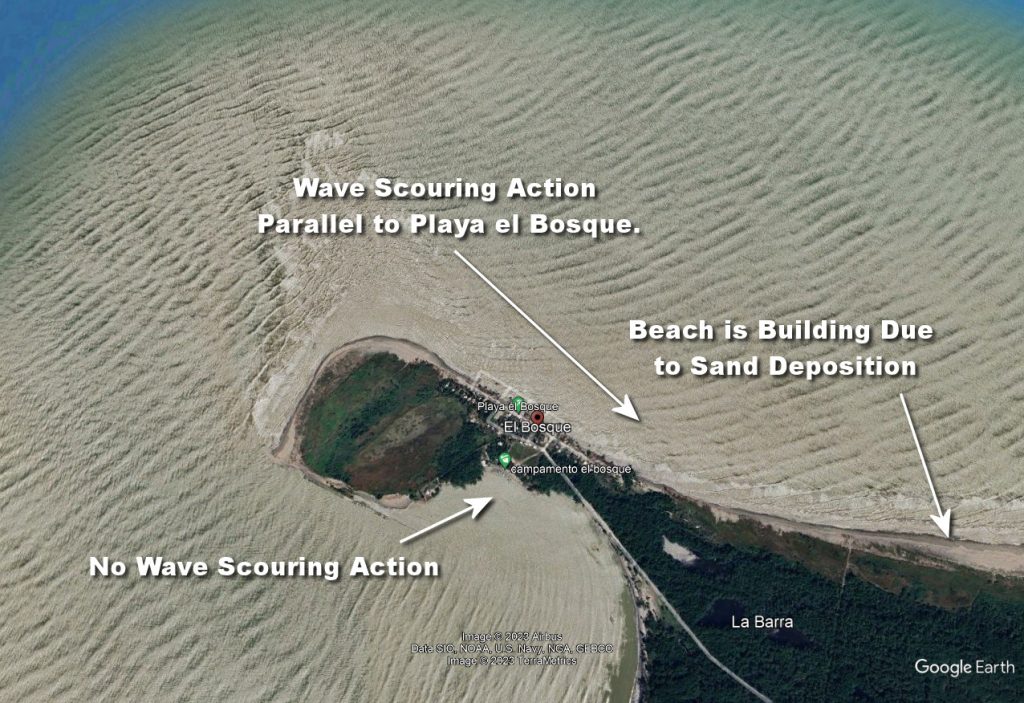
The Climate Realism article points out, “[t]his is not climate change, climate change does not reach out to affect a small section of beach, shrinking one part, and building up another less than one mile away.” This is clearly illustrated in Figure 2 above.
The post on ABC news also claims that “along with rapidly rising water levels, winter storms called “nortes” have eaten more than one-third of a mile (500 meters) inland since 2005,” and suggest that these winter storms are increasing in duration and frequency. “A warming climate spins up more frequent storms as it slams into ultra-cold polar air, and then storms last longer — fueled by hotter air, which can hold more moisture,” the AP writer claims.
As clearly shown in Climate at a Glance – Global Tropical Cyclones, there is no evidence in real-world data that tropical storms are on the increase. Further on Page 90, in chapter 12 of the United Nation’s Intergovernmental Panel on Climate Change Sixth Assessment Report, Emergence of Climate Impact Drivers, it clearly states in the table there that climate science has NOT detected sea level rise, coastal flooding, or coastal erosion as a consequence of todays observed climate change. See table 1 below.
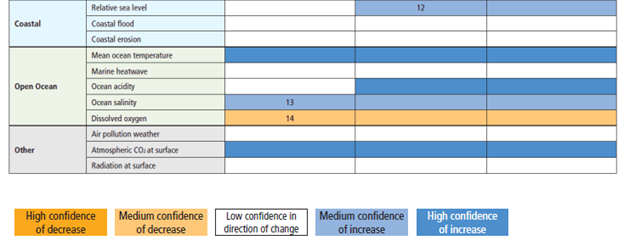
There’s a saying in science for the sort of wildly speculative claims made in the AP article, “not even wrong” – which is so well-known it has its own Wikipedia page, noting:
“Not even wrong” is a phrase often used to describe pseudoscience or bad science. It describes an argument or explanation that purports to be scientific but uses faulty reasoning or speculative premises…”
“Not even wrong” is an apt description of the ABC and AP article which makes claims that are not only wildly speculative, but completely unsupported by the body of existing climate research. Shame on the AP for publishing Daniel Shailer’s blatantly false claims.










